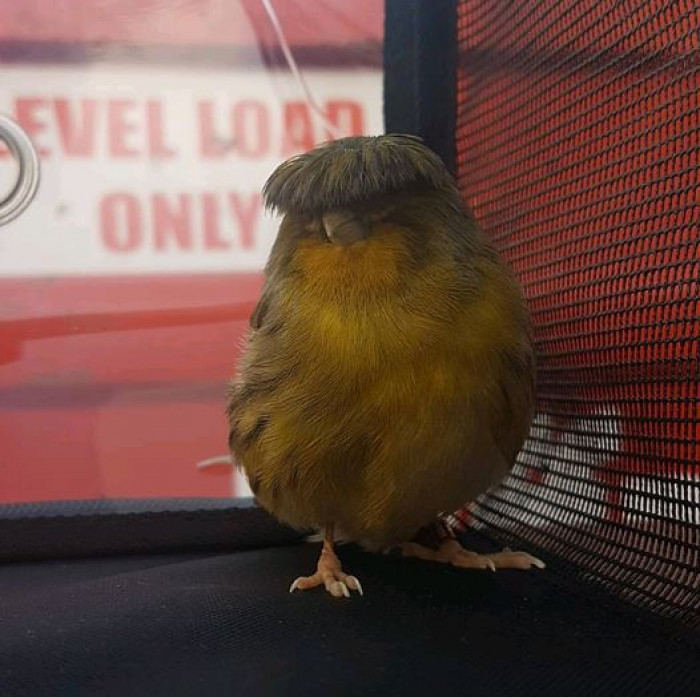Rainbow Feather Canary With A Retro-Style Bowl Cut Hairdo Is Turning Heads Everywhere
This is going viral for all the right reasons.

Scientifically known as 'Serinus canaria domesticus' the Gloster canary was named after the Canary Islands. These birds originated from Gloucestershire, England, in the early 1920s where they were bred from other canaries as pets and thus were never found in the wild.
It was only in 1960 that they were brought to the United States where further breeding led to their popularity. In 1976, a Gloster canary won the best in show cementing its worth in the eyes of canary lovers worldwide.
Although Gloster canaries are much like other small birds, they're bred for their color, hair, and tunes. After their win in 1976, these birds became popular house pets for people with small spaces as well as those who preferred quieter bird species.
What started with one Gloster canary quickly grew in size and so, today, you won't be surprised to see approximately 200 Gloster canaries competing for the best in show title in a single show! Although these birds don't bite, they don't like to be handled.
They love to be active in their own way so to enjoy their company it's best to leave them be and listen to the tunes they belt out! As far as toys are concerned, they enjoy playing with small bird toys, small bells, and bird pacifiers.
Now let's meet Barry, a stunning Gloster canary!
That hairdo...
“I’m the bird with the fringe!”

“On the 26th of July, we went to a pet shop to look for the perfect bird.”

“We came back on the 27th and thought he was definitely the one,” said Barry’s owners.“

“We believe he is 1 and a half years old but we have no proof (Glosters can live 7 – 12 years).”

“There are two types of Gloster canaries, one being consorts they are the ones without the fringe and the others are coronas with the fringe and it’s pretty obvious which category Barry falls under...”

“Barry absolutely adores going out in his bird carrier. We will walk around parks and fields and he will tweet and hop with excitement.”

“He also loves sitting on the window still and singing.”

Common Health Problems
These birds hate drafts and so avoid exposing them to drastic temperature changes. Drastic temperature changes can cause unwanted respiratory issues.
Gloster Canaries are prone to air sac, feather, and red mites. They should be kept away from mosquitoes to prevent them from catching canarypox that's transmitted through mosquitoes.

Diet and Nutrition
These cute little birds should be fed a diet filled with seeds, fruits, vegetables, and millet to provide them with the nutrition they need to survive.

Any pet needs exercise and the same applies to Gloster Canaries. A large enclosure can provide them with ample space to fly, but if they have a small-medium enclosure, they should be allowed to safely fly indoors to get the daily amount of exercise they need to remain healthy.
Along with a large enclosure, your bird will appreciate a sturdy perch and a few toys to help them entertain themselves and those who are mesmerized by their beauty!
H/T: OneBirdCage

